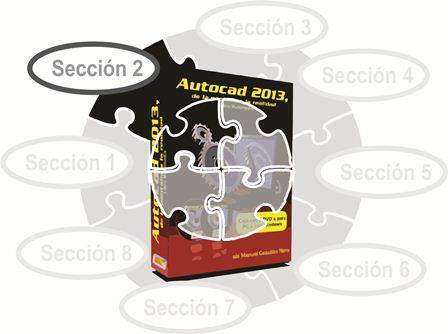Building Objects with AutoCAD - Section 2

8.4 Multiple Line Text
In many cases, the drawings require no more than one or two descriptive words. In some cases, however, the necessary notes may be of two or more paragraphs. So, the use of line text is absolutely inoperative. Instead we use multi-line text. This option is activated with the corresponding button that can be found both in the "Text" group of the "Annotate" tab, and in the "Annotation" group of the "Start" tab. It has, of course, an associated command, it is "Textom". Once active, the command requests that we draw on the screen the window that will delimit the multi-line text, which creates, as it were, the space of a small word processor. An idea that is reinforced if we activate the toolbar that is used to format the text, which, in turn, is matched in functions with the contextual eyebrow that appears on the ribbon.
The use of the "Multiple Line Editor" is very simple and similar to editing in any word processor, which are very well known, so it is up to the reader to practice with these tools. Don't forget that the "Text format" bar has a drop-down menu with additional options. It should also be said that to edit a multi-line text object we use the same command as for the texts of a line (Ddedic), we can also double-click on the text object, the difference is that in this case the editor is opened which we present here, as well as the contextual tab "Text Editor" on the ribbon. Finally, if your multi-line text object is made up of several paragraphs, you must set its parameters (such as indentations, line spacing, and justification), through the dialog box of the same name.
8.5 Tables
With what has been seen so far, we know that "throwing" lines and creating text objects on a line is a task that can be done quickly and easily in Autocad. In fact, it would be all that it would take to create tables easily and quickly, combining, for example, lines or polylines with text objects to create the appearance of a table.
However, tables in Autocad are a type of object independent of those of text. The "Tables" group of the "Annotate" eyebrow allows you to insert tables in Autocad drawings in a simplified way, since, once the command is started, you simply have to specify how many columns and how many rows the table will have, among other simple ones parameters Let's see how to insert tables and capture some data in them.
With the tables it is even possible to perform some calculations, just like an Excel spreadsheet, even if you don't expect all the functionality of that program. When selecting a cell, the ribbon shows a contextual eyebrow called “Table cell” with options similar to those of a spreadsheet with which, among other things, we could create a formula that does basic operations on the data of the table.
The formula for adding values from a group of cells in the table is the same as those we use in Excel, but we insist, it is so rudimentary that it is not really practical to use Autocad tables for these purposes. In any case, it is much more practical to manipulate your data in an Excel spreadsheet and then link them to an AutoCAD table. Even when the data in that spreadsheet is modified, the existence of a link between the table and that sheet allow updating the information in Autocad.
Finally, similar to text styles, we can create styles to apply to our tables. In other words, we can create a set of presentation features, such as line types, colors, thicknesses and borders under a specific name and then apply them to different tables. Obviously, for this we have a dialog box that allows us to manage the different styles.

